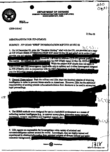Censorship of student media
Censorship of student media is the suppression of free speech by school administrative bodies of student-run news operations. Typically this involves interfering with the operation and final publishing authority of a school newspaper, radio, television or other electronic online content generated by students.
While this has typically consisted of schools enforcing their authority to control the funding and distribution of publications, sometimes forms of censorship extend to expression not funded by or under the official auspices of the school system or college (for example, confiscating independently produced "underground" publications or imposing discipline for material posted on off-campus websites).
United States
The states of Arkansas, California, Colorado, Illinois, Iowa, Kansas, Massachusetts and Oregon have all passed legislation fortifying student journalists' right to free expression.[1] The nonprofit Student Press Law Center tracks and provides pro-bono legal aid to student-run media organizations in the U.S.
Some notable cases in the United States include:
- Hazelwood School District v. Kuhlmeier, 1988- A Supreme Court decision that held that public school curricular student newspapers that have not been established as forums for student expression are subject to a lower level of First Amendment protection than independent student expression or newspapers established (by policy or practice) as forums for student expression.[2]
- Tinker v. Des Moines Independent Community School District, 1969[3] - The establishment of the First Amendment rights of students in U.S. public schools. This played a significant role in the Hazelwood School District v. Kuhlmeier case as decision making.[4]
- Rosenberger v. University of Virginia, 1995[5] - The Supreme Court of the United States assessment on whether a state university retains from the funding of publications by students with regards to the First Amendment.
- Papish v. Board of Curators of University of Missouri - A Supreme Court ruling that the University of Missouri could not discipline a college student for profanity and "indecent" sexual references in an "underground" publication that she funded and distributed.[6]
- Morse v. Frederick, 2007- A Supreme Court decision in the case of 18-year-old Joseph Frederick, punished for displaying a banner reading "BONG HiTS 4 JESUS" across the street from a school during the 2002 Olympic Torch Relay, concluding that speech promoting illegal drug use during school-sanctioned events is unprotected.[7]
States with Laws protecting the First Amendment Rights of Student Journalists
- Arkansas
- California
- Colorado
- Illinois
- Iowa
- Kansas
- Maryland
- Massachusetts
- Nevada
- North Dakota
- Oregon (high school) (college)
- Rhode Island
- Vermont
- Washington
Student Press Freedom day
Student Press Freedom day[8] is a national day of student journalists and their contributions celebrated on Wednesday, Jan. 29, 2020. This marks the anniversary of the Hazelwood School District case and to support and express importance towards students' freedom of press.
Endorsers:[9]
- Student Press Law Center
- Associated Collegiate Press
- College Media Association
- Center for Scholastic Journalism
- First Amendment Coalition
- Freedom Forum Institute
- Journalism Education Association
- National Scholastic Press Association
- PEN America
- Quill & Scroll
- SNO Sites
- Society of Professional Journalists
The First Amendment
The first Amendment within the rights of student journalists protects and assures their practices in journalistic practices.[10]
Censored Topics
Based on Interview and survey data:[10]
- Issues of race
- Sexual assault
- Politics
- Athletics
- Women’s reproductive rights
- #MeToo movement.
Impact of Censorship
- The fear of isolation - is a major impact of censorship where individuals
- The spiral of silence theory - a concept where individuals hold a fear to speak opinions and thoughts that may go against the publics majority opinion.[10] This is due to the fear of isolation.
References
- Student Press Law Center. "Student Press Law center - Law Library". SPLC. Retrieved 2013-11-11.
- https://www.oyez.org/cases/1987/86-836
- https://www.oyez.org/cases/1968/21
- "Student Press Law Center | Hazelwood School District v. Kuhlmeier". Student Press Law Center. 1988-01-13. Retrieved 2020-04-15.
- https://www.oyez.org/cases/1994/94-329
- "Papish v. Board of Curators of the University of Missouri, 410 U.S. 667 (1973)." Papish v. Board of Curators of the University of Missouri, 410 U.S. 667 (1973). Accessed October 11, 2016.
- https://www.oyez.org/cases/2006/06-278
- "Student Press Law Center | Student Press Freedom Day — Jan. 29, 2020". Student Press Law Center. 2020-01-01. Retrieved 2020-01-30.
- "Student Press Law Center | Student Press Freedom Day — Jan. 29, 2020". Student Press Law Center. 2020-01-01. Retrieved 2020-04-15.
- https://scholarworks.unr.edu//handle/11714/5736. Missing or empty
|title=(help)
